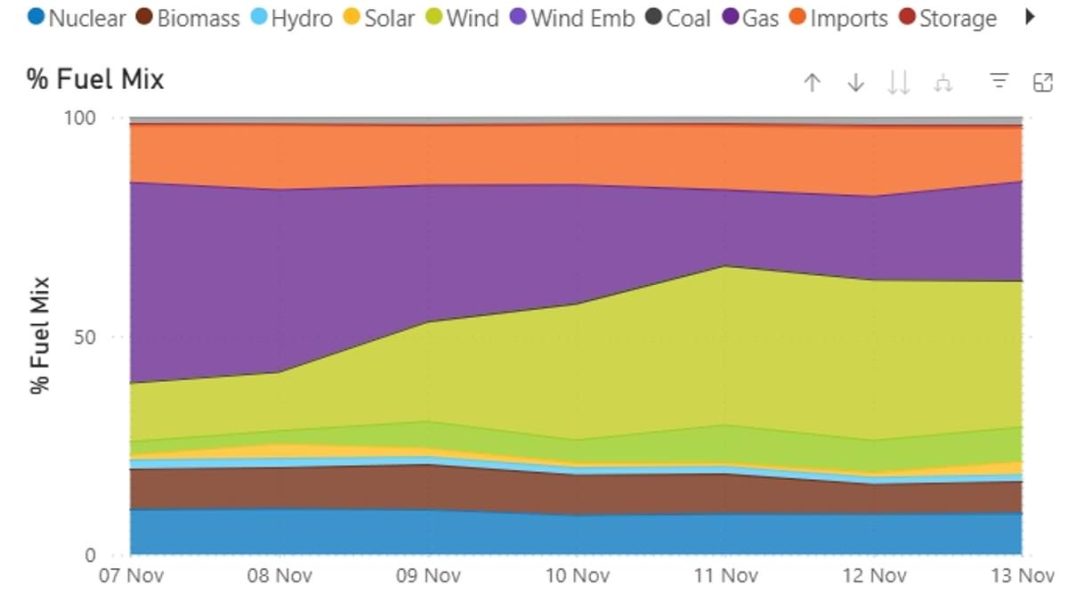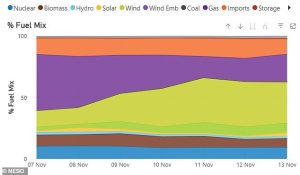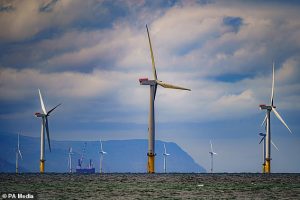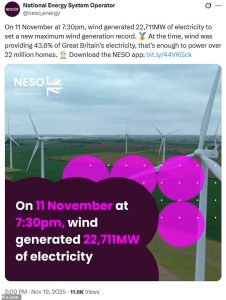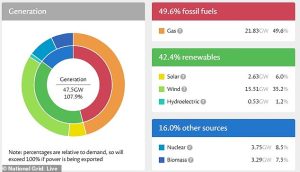UK Wind Power Hits Record High, Powering Over 22 Million Homes
Britain’s wind power generation has reached a historic peak, with turbines producing 22,711 megawatts (MW) on November 11 – enough electricity to power over 22 million homes. The National Energy System Operator (NESO) confirmed this new record, surpassing the previous high of 22,523 MW set in December last year.
Key Takeaways
- Wind power generated 22,711 MW, setting a new UK record
- Wind supplied 55.7% of Britain’s electricity during peak generation
- The achievement positions UK as global leader in wind energy
- Government targets include quadrupling offshore wind by 2030
Record-Breaking Performance
At 7:30 PM on November 11, wind power accounted for 43.6% of Britain’s electricity mix, with an additional 12.1% coming from embedded wind systems. Combined, wind energy provided 55.7% of the nation’s power needs during the record period.
“This is a world-beating record that shows our national grid can run safely and securely on large quantities of renewables generated right here in Britain,” said Kayte O’Neill, chief operating officer at NESO.
Britain’s Energy Mix Breakdown
During the record evening, Britain’s electricity came from diverse sources:
- Wind: 43.6%
- Embedded Wind: 12.1%
- International Interconnectors: 11.3%
- Nuclear: 8%
- Biomass: 8%
- Hydro: 1.4%
- Storage: 1.1%
Why This Milestone Matters
Britain’s exposed position in the north-east Atlantic makes it one of the world’s prime locations for wind power. The country now hosts five of the largest offshore wind farms globally, including Hornsea – the world’s biggest wind farm.
The UK government aims to double onshore wind capacity and quadruple offshore wind by 2030 as part of its clean power strategy.
Progress in Clean Energy
NESO reports that clean, low-carbon energy sources now generate approximately 60% of Britain’s electricity, a dramatic increase from just 3% in 2000. Wind power alone generated nearly 83 terawatt-hours in 2024, contributing significantly to clean electricity records.
“We’ve come on leaps and bounds in wind generation in recent years,” O’Neill added. “I look forward to seeing if we can hit another clean energy milestone – running Britain’s electricity grid entirely zero carbon.”
Understanding Energy Sources
Renewable Sources include wind, solar, hydro, tidal, geothermal and biomass – all generating power without carbon emissions.
Fossil Fuels like gas, coal and oil release carbon dioxide when burned, contributing to global warming. Britain has completely phased out coal from its energy mix, with oil accounting for less than 1%.
While nuclear energy is considered clean, debate continues about its renewable status since it uses non-renewable uranium fuel.


